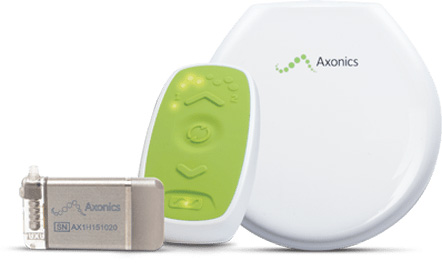Woman gets life back after pelvic floor dysfunction diagnosis
Urinary incontinence affects approximately 50% of American women during their lifetime. Fecal incontinence affects about 1 in 5 American women over the age of 40.
Sandra Salas experienced both. She suffered from pelvic floor dysfunction, a weakening of her pelvic floor muscles. She attributed the condition to more than nine years of lifting and moving her 250-pound paraplegic husband. Her condition worsened after she burst her T12 vertebrae and fractured her T11 vertebrae in a car accident in 2023.
“All of these events together took a toll on my body. It made it really difficult for me to get to the bathroom in time,” Salas said.
Her condition limited her ability to travel and affected her comfort level being away from home. She would often turn down invitations to go out for the day if she wasn’t in close proximity to a bathroom.
But she said her health care team at UC Davis Health was determined to find a solution to improve her quality of life.
A small medical device cures her condition

Salas was diagnosed with a cystocele (a condition where the bladder bulges into the vagina) and a rectocele (where the rectum bulges into the vagina). UC Davis Health chief of urogynecology Stacey Wallach successfully repaired both conditions.
Then Wallach offered Salas another solution to help improve the communication between her brain, bladder and bowel: A small, medical device implanted in her lower back. The so-called sacral nerve neurostimulator (SNS), uses gentle electrical impulses to stimulate the sacral nerves and muscles that control the bladder and bowel movements.
“For the longest time, we were the only place in Northern California offering SNS. I thought Sandra would be a good candidate for this,” Wallach said.
I am thankful for this team for helping me get a good quality of life back. I want to let other people know that this worked for me, and it could work for them. It has been life-changing for me.” —Sandra Salas
For this outpatient procedure, the small neurostimulator, the size of a matchbox, is implanted during surgery just above the buttocks. Nerve signals are sent from the bladder and bowel to the brain to alert the patient that it is time to get to the bathroom. The implant also provides stimulation to the nerves that control the bladder and bowel. A remote control is provided to adjust the vibration levels.
Salas was skeptical at first, and didn’t think it could make a difference. She was afraid to have something implanted in her body. But after much deliberation, she decided to try the SNS.
A life-altering difference overnight
“Once I had the procedure, I could see the difference overnight,” said Salas, who had the procedure in February. “I knew when to go to the bathroom and had plenty of time. The stimulator was talking to my brain.”

Her SNS, made by Axonics, is also MRI-compatible and does not need to be replaced during her lifetime. She can recharge the device wirelessly every six to ten months by wearing a charging belt.
Salas has relished her newfound freedom and has returned to an active lifestyle that she put on hold for many years.
“I am thankful for this team for helping me get a good quality of life back,” Salas said. “I want to let other people know that this worked for me, and it could work for them. It has been life-changing for me.”
UC Davis Health’s urogynecology team provides comprehensive expertise in treating patients with a variety of pelvic floor symptoms. For more information, visit our website.





